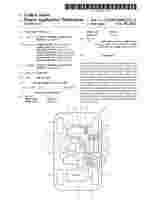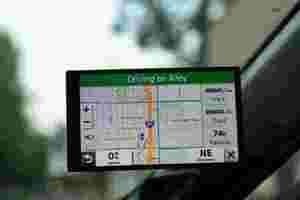All EVs have automatic transmission… but Toyota begs to differ
This is something you might not know: almost all EVs are automatic.

You’ll be hard pressed to find one with a gear stick. Why, you ask? Because EVs simply don’t need more than a single gear .
I know, a stick shift car feels empowering, so why haven’t automakers thought about a “best-of-both-words” solution and put one in an EV?
Oh wait, they have. Kinda.
Yep, the carmaker is flirting with manual transmission and a clutch for… EVs?!
At least that’s the info we got from a series of patents filed to the United States Patent and Trademark Office (USPTO), and unearthed by BZ Forums .
Let’s take a closer look at the latest filing, published on the February 10, 2022:


The abstract reads:
Okay, I’m no engineer but here’s what I understand:
There’s an EV mechanism that can switch between “control modes” of standard automatic and manual driving.
This mechanism uses “pseudo-clutch” and “pseudo-shifter” inputs to adjust the torque produced by the electric motor.
But given that the prefix “pseudo-” is used so much, I’m led to believe that this controller is more a symbolic function than a performance-based one. In other words, it’s all about the nostalgia of manual gear-shifting.
As much as I find it unlikely for a company to invest money on basically useless tech, I get it. Dressing the new with the familiarity of the old is a proven marketing technique.
Let’s not forget that Ford created a petrol-scented perfume for those who wanna go electric, but miss the ol’ scent of gasoline too much.
Under this light, Toyota’s EV gear stick patent actually makes sense.
Toyota Mirai wins the race for longest hydrogen fuel cell powered ride
The 2021 Toyota Mirai has officially set the Guinness World Records title for the longest distance by a hydrogen fuel cell electric vehicle without refueling. The Mirai achieved an unprecedented 1360 km (845 miles) driven on a single, five-minute complete fill of hydrogen during a roundtrip tour of Southern California as it set the record.



With its only emission water, the journey sets a new distance milestone for zero-emission vehicles.
By the end of the trip, the Toyota Mirai consumed 5.65kg of hydrogen. It passed a total of 12 hydrogen stations along the drive routes without refueling. Two car specialists drove the Mirai mostly during rush hour traffic in temperatures between 65 to 83 degrees Fahrenheit. It emitted zero pounds of CO2. By comparison, a standard internal combustion engine vehicle would have emitted about 664 lbs. of CO2 over the same distance. Impressive stuff.
Toyota Mirai and hypermiling: hack your driving to increase your range
Toyota Mirai’s result is due to the practice of hypermiling. It’s about optimizing the vehicle’s performance under specific weather and driving conditions.
To ensure the most extended range in a Mirai, Toyota advises drivers to avoid quick acceleration or heavy braking and driving at higher speeds.
Toyota hybrids also have the Predictive Efficient Drive. This means cars essentially read the road and learn driver patterns to optimize hybrid battery charging and discharging operations based on driving conditions. The system accumulates data as the vehicle is driven, It also “remembers” road features such as hills and stoplights, and adjusts the hybrid powertrain operation to maximize efficiency.
Range anxiety is becoming a thing of the past
HFC-powered cars aren’t the only ones going longer. Last month Lucid Air achieved 837 kilometers (520 miles) on a single charge. This makes it the first electric car ever to breach 500 miles.
Hyundai recently unveiled the “Trailer Drone” concept. It’s a hydrogen-powered autonomous container transportation system that can operate fully autonomously at a duration of 1,000km on a single charge. Range anxiety is a genuine concern that deters drivers from moving to EVs. We’re seeing some really great innovations in battery and energy that produce longer-range capabilities help ease the transition.
Guinness World Records are bizarre
As yes, in case you are wondering, Guinness World Records are still very much a thing. They didn’t die out in the 1980s. In fact, there are some bat shit crazy records in mobility.
For example:
Longest wheelie on a quad bike: In 2018, Captain Abdulla Al Hattaw performed a non-stop wheelie of 60 km in Dubai, UAE.
Largest car dance record : Yes, synchronized car dancing is a thing — I didn’t know either. In 2018 180 Nissan Patrol drove in synchronized formation to resemble the giant falcons of the desert when seen from a bird’s eye view in UAE.
Most people crammed into a ‘new’ VW Beetle : 25 people somehow crammed themselves into a standard VW in Austria in 2000.
Fastest flight by jet engine suit : In 2019, real-life Iron Man, Richard Browning achieved the fastest speed in a body-controlled jet engine powered suit (wind-guided) at 136.891 kmph (85.06 mph). He more than doubled the previous record of 51.53 kmph (32.02 mph), which he set two years previously.
Do EVs excite your electrons? Do ebikes get your wheels spinning? Do self-driving cars get you all charged up?
Then you need the weekly SHIFT newsletter in your life. Click here to sign up .
How Bangkok’s 40,000-kilometer transport network was mapped for the first time
This article was originally published by Christopher Carey on Cities Today , the leading news platform on urban mobility and innovation, reaching an international audience of city leaders. For the latest updates follow Cities Today on Twitter , Facebook , LinkedIn , Instagram , and YouTube , or sign up for Cities Today News.

London-based mapping company WhereIsMyTransport has completed what it claims is the first comprehensive overview of Bangkok’s transport network, mapping 40,000 kilometers of data across the city in 60 days.
The firm, which specializes in mapping transport data in emerging cities globally, employed a team of 25 locally based data collectors to travel across the Thai capital’s public transit network – including the MRT , the BTS Skytrain , and bus services – as well as the vast array of informal ‘songthaew,’ minibus and riverboat routes that provide the bulk of first- and last-mile services.
Local staff collected key data on routes and fares which was then uploaded to WhereIsMyTransport’s database at the end of each journey.
Yohnny Raich, Data Product Owner, WhereIsMyTransport, told Cities Today : “We did quite a bit of research before starting our data collection to see if anything like this already existed, and couldn’t find a comprehensive source that provided an up-to-date overview of all transit options across the city.”
Through its research, the firm found that while data on established routes like the MRT and BTS skytrain was publicly available, there were discrepancies in timetables for localized bus services, and a distinct lack of data for the huge range of informal privately operated minibus-type services that complement traditional public transport.
“I think the most interesting finding for us was the size and scale of the city’s transport network – there are over 800 public transportation routes in Bangkok,” said Raich. “We’ve developed our own mobile application that enables us to collect all the relevant information – the routes, frequencies, hours of operation and approximate fare payments, etc.”
Data collected from the Bangkok project is available for organizations to license for a fee, and previous clients include the World Bank, which used WhereIsMyTransport’s data to support urban accessibility evaluations in multiple African cities.
Mapping emerging cities
In February, WhereIsMyTransport raised US$7.5 million in a Series A funding round, with investment from companies including Google and Toyota Tsusho Corporation (TTC).
The startup first began mapping cities in Africa in 2015, before expanding to India, Southeast Asia , and Latin America.
It is currently focused on bridging the information gap around informal modes of transport like minibusses and rickshaws, which account for a high proportion of urban travel in developing cities globally.
Bangkok is the third emerging ‘megacity’ WhereIsMyTransport has mapped, after Mexico City and Dhaka, and the firm plans to be the first mapping operator to collect a complete set of data on formal and informal public transport in the developing world’s 30 largest cities by 2023.
“The production and maintenance of this mobility data is a fundamental first step towards transforming the public transport experience for hundreds of millions of people, and with it the social, cultural, and economic landscape of these cities,” said Devin de Vries, CEO, WhereIsMyTransport.
“We recruit large local teams, train them to use our proprietary suite of tools, and work alongside them to collect data on the public networks that they know better than anybody – this collaborative method means we uncover every nuance in these unique, home-grown transport systems.”
SHIFT is brought to you by Polestar. It’s time to accelerate the shift to sustainable mobility. That is why Polestar combines electric driving with cutting-edge design and thrilling performance. Find out how .